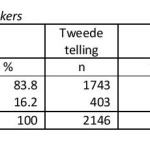Tiny Bouts Of Contentment. Rare Film Footage Of Graham Greene In The Belgian Congo, March 1959
My purpose in this contribution is to present and contextualize the only film footage ever recorded of the novelist Graham Greene (1904-1991) in the Belgian Congo in 1959. The footage was filmed with an 8mm camera, which did not record sound. It belongs to Mrs. Édith Lechat (née Dasnoy;1932-) and her husband, the leprosy specialist Doctor (later Professor) Michel Lechat (1927-2014).
From 1953 through 1960, Dr. Lechat was head of the leper hospital and colony of Iyonda, a village and mission station some 15 kms south of the city of Coquilhatville (now, Mbandaka) in central-western Congo. Greene stayed a number of weeks in Iyonda and other mission stations in the region in search of inspiration, a setting, and material for a new novel. The novel, A Burnt-Out Case, appeared in 1960, and was dedicated to Dr. Lechat. Greene occupied a room in the house of the missionary fathers in Iyonda, but spent long parts of his days with the doctor and his family. The film reached me through the hands of Édith Lechat, who had it transposed to a DVD-playable format, and via my friend Hendrik (a.k.a., “Henri” or “Rik”) Vanderslaghmolen (1921-), who was a missionary in the region at the time. As he was one of the only Belgian missionaries there with some knowledge of English, he often accompanied Graham Greene during his trips from one mission station to another. Rik Vanderslaghmolen and the Lechats are still close friends today.
Much of the information I offer below stems from conversations I had with both Rik Vanderslaghmolen and Édith Lechat in July and August 2013. Regrettably, Dr. Michel Lechat’s poor health condition did not allow me to probe his memory, but an interview he gave for the Brussels-based weekly The Bulletin on the occasion of Greene’s death in 1991 is available (Lechat 1991), as well as a closely similar talk he gave at the 2006 Graham Greene Festival in Berkhamsted, published in the London Review of Books in August 2007 (Lechat 2007). Édith Lechat has given me the kind permission to share the film with the readership of Rozenberg Quarterly and to add the necessary contextual information on both the historical situation and the contents of the film.
Mira Bar Hillel – What Even Is Affordable Housing?
Independent.co.uk. December 4, 2013. “The definition of this vanishing resource slips all over the place.”
A friend of mine, who used to be a very senior civil servant in what was, in the 1980s, the department now known as Communities and Local Government, had a recurrent nightmare.
“I used to wake up in the middle of the night in a cold sweat”, he told me. “In my dream someone is demanding that I define the term ‘affordable housing’…”
The poor chap, who was tasked with devising and producing housing policies, used the term endlessly. It was a political buzzword, like “sustainable” used to be until the Government decided that green was becoming an expensive colour. Decades later, the worse the housing crisis becomes, the more the word “affordable” is used – but still with no definition attached.
So what IS affordable housing?
Read more: http://www.independent.co.uk/
From The Web – Enduring Voices
Nearly 80 percent of the world’s population speaks only one percent of its languages. When the last speaker of a language dies, the world loses the knowledge that was contained in that language. The goal of the Enduring Voices Project is to document endangered languages and prevent language extinction by identifying the most crucial areas where languages are endangered and embarking on expeditions to:
Understand the geographic dimensions of language distribution
Determine how linguistic diversity is linked to biodiversity
Bring wide attention to the issue of language loss
When invited, the Enduring Voices Project assists indigenous communities in their efforts to revitalize and maintain their threatened languages.
The Language Hotspots model was conceived and developed by Greg Anderson and David Harrison at the Living Tongues Institute for Endangered Languages. It is a new way to view the distribution of global linguistic diversity, to assess the threat of language extinction, and to prioritize research. Hotspots are those regions of the world having the greatest linguistic diversity, the greatest language endangerment, and the least-studied languages.
Read more: http://travel.nationalgeographic.com/travel/enduring-voices/
Carvalho, Regiane – Slums And Cities In Brazil: Comparison For Belo Horizonte And Rio De Janeiro
iussp.org. 2013
Abstract
This paper compares slums (subnormal clusters) with formal city to identify similarities and differences between these populations. The exercise is done for two Brazilian cities: Rio de Janeiro and Belo Horizonte, both with over 2 million inhabitants. In Rio de Janeiro 22% of population lives in 763 slums while in Belo Horizonte 13% of population lives in 211 slums spread throughout the city territory. The analysis consists of comparing the formal city with slums regarding individual demographic characteristics of the population such as age structure, composition by race / color as well as characteristics of households like access to basic sanitation, including access to potable water and waste disposal. Using data from the 2010 National Demographic Census, the results indicate that, in fact, there isn’t a great disparity between slums and rest of the city with regard to the differences in attendance to basic services, being this difference was more pronounced with regard to the age structure of the population and social inequalities understood as differences in income and
race/color. Finally, some recommendations are made for public policies aimed at the population living in slums.
Read more: http://www.iussp.org//Carvalh.pdf
How Has Economic Growth Affected Poverty And Inequality In Ghana And South Africa?
Samuel Kobina Annim, University of Cape Coast; David Lam, University of Michigan; and Murray Leibbrandt, University of Cape Town
Established in 2008, the African Studies Center (ASC) supports the exchange of scholars, faculty, knowledge, and resources between the University of Michigan.
Youtubechanel: umichASC



